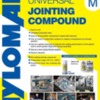We are currently implementing a combined cycle power plant project. We have purchased 4x LM6000 PC Sprint gas turbines from GE Power Systems and 2x26 MW condensing steam turbines from GE Thermodyn/France.
We have witnessed factory running test for steam turbines at GE Thermodn France. Each steam turbine is 26 MW, condensing, impulse type, 4200 rpm. The gearbox and generators is at steam inlet side of the turbine. During the test, we noticed that there is lube oil leaking from labyrinth seal of front bearing towards the coupling which connects turbine to gearbox. We objected and requested to correct the situation but GE Thermodyn said that the oil leakage is normal and therefore they have put a totally closed coupling guard and a 11/2" piping underneath to return the oil collected at coupling guard to the oil tank.
We would like to take your comments/remarks regarding this situation. Did you meet such a conditions?
Awaiting for your kind reply,
Best Regards,
Akif Ozmen
HABAS A.S.
e-mail : akif.ozmen@habas.com.tr and/or cryon@superonline.com
Tel : +90 216 4525600 ext:485
Fax : +90 216 4522570
Fuat Pasa Sok. No:26
Soganlik Kartal
81570 Istanbul
TURKEY
Original Post


